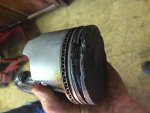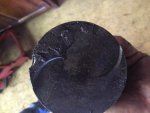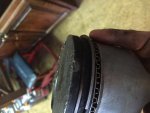This is a long discussed topic, vacuum advance and intake or ported, lol.
There actually is a correct answer but it is engine specific, and a few variables are involved.
It is often said ported vacuum was used for lower emissions, which is partly true.
Car makers used lower compression engines which have bad emissions cold, so ported vacuum was used to warm them up faster.
First, all distributors(in this example) have centrifugal advance, weights and springs.
This advances spark timing based on RPM.
Why do we even need to change spark timing?
An air/fuel mix has a burn rate, from the time it is ignited until it reaches explosive force.
The burn rate for the most part is a fixed amount of time, based on the mixture, i.e. 14.7:1.
You want the explosive force part to happen at about 15deg After TDC, on most engines, this gives the piston the best leverage on the crank, earlier is less power later is less power, before TDC is minus power

.
Because the burn rate time is fix but the RPMs are not, the faster the piston is moving the more advanced you want the spark so fuel mix has time to burn then explode after TDC.
At red-line RPM say 6,000 the spark advance might be 36deg on centrifugal advance.
So why vacuum advance?
Air/Fuel mix is why
Idle and cruising air/fuel mix is "lean", not pinging/knocking lean but not Rich.
So the burn rate is the same, just the RPMs are different which centrifugal advance takes care of.
When you step on the gas the air/fuel mix gets Rich, 13:1, instantly, and a Rich air/fuel mix has a shorter burn rate, so if burn rate changes spark advance needs to change, so vacuum advance was added.
Intake vacuum is highest at idle and cruising so it holds advance for the slower burning Leaner mix.
When you open the throttle fuel mix gets richer and vacuum drops, vacuum advance is reduced for the faster burning mix.
Ported vacuum, with lower compression engines you need them to heat up faster and stay warmer to lower emissions.
With less vacuum advance the slower burning mix explodes closer to TDC, less power but more heat is generated.
Many car makers used both, ported when engine was cold and then intake vacuum when engine was warned up.
Both have their points for economy and performance, correct choice is engine and driver based




















